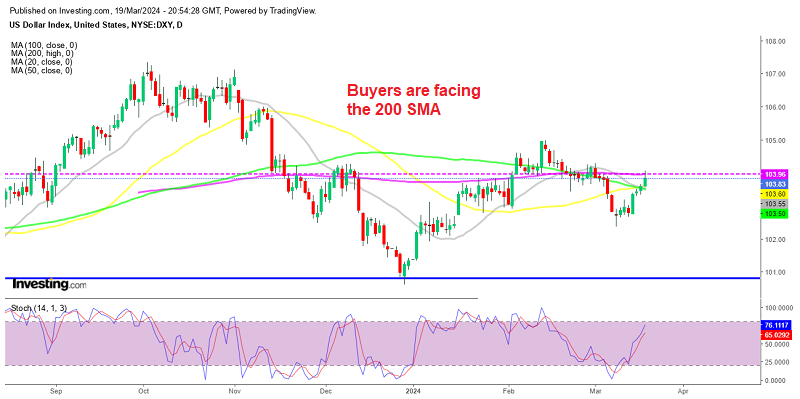The U.S. dollar index, which gauges the dollar’s strength to a basket of six major currencies, has increased by 4.6% so far this year and is currently trading close to where it was in early November. The index saw its largest weekly rise since September 2022 last week, up 1.7%. As investors become more certain that the Fed must maintain current interest rates for an extended period to prevent a possible spike in inflation. The consumer price data from last week was greater than anticipated, which supported the belief that investors had only factored in 50 basis points of interest rate by late Friday.

That opinion was supported by last week’s better-than-expected consumer price data, which indicated that as of late Friday, investors were only pricing in 50 basis points of interest rate cuts in 2024, down from 150 basis points at the beginning of the year.
Investors, however, feel that certain international central banks, such as the Bank of Canada, and the European Central Bank, may be able to loosen monetary policy. That’s a change from a few months ago when most people thought the Fed would be the first to lower interest rates.
The gap in yields between the US and other nations got wider, which has helped the greenback appreciate since higher yields increase the appeal of assets denominated in US dollars.
A day after the European Central Bank said it may lower rates as early as June, the two-year U.S.-German bond spread hit its widest point since 2022 late Friday, according to LSEG data.
While bears have backed off, bullish investors have raised their wagers on the dollar. According to data from the Commodity Futures Trading Commission, net bets on the dollar in futures markets reached a record high of $17.74 billion in the most recent week, the biggest since August 2022.
The divergent efforts of economies to limit inflation are reflected in the recent divergence in central bank policy.
the Swiss National Bank lowered rates by 25 basis points in March for the first time in nine years, The Bank of Canada recently indicated that it was prepared to lighten, while Sweden’s central bank has hinted that it may lower rates in May if inflation continues to decline.
Conversely, the central banks of Australia, the United Kingdom, and Norway don’t seem as keen to ease monetary policy.
Even though Japan has just finished eight years of negative interest rates, the yen’s value has dropped to a level close to a 34-year low vs the US dollar. The Bank of Japan has said that raising interest rates won’t be used to boost the yen.
Markets anticipate that the dollar will continue to rise due to the Fed becoming more hawkish than the European Central Bank. This year, the euro has dropped 3.6% versus the US dollar.
A higher dollar could help the United States control consumer prices by tightening financial conditions, and also make the battle against inflation more difficult for other nations by pushing down their currencies.
The recent gains in the greenback work against American multinational corporations by increasing the cost of converting their foreign profits into dollars and decreasing the international competitiveness of exporters’ goods.



















